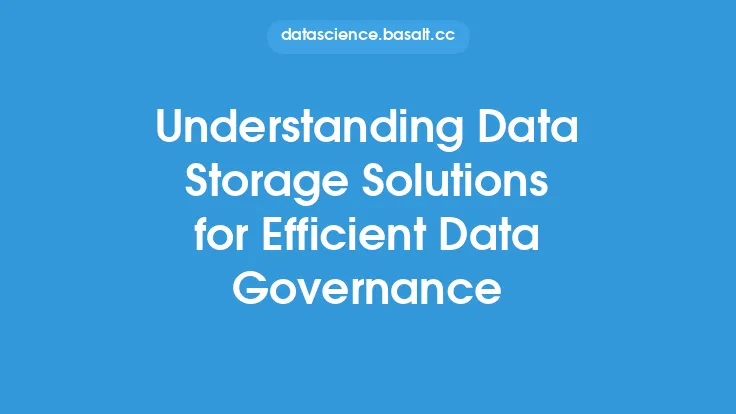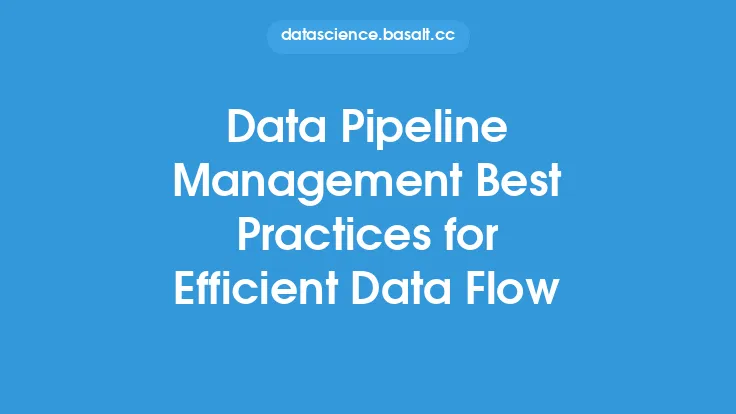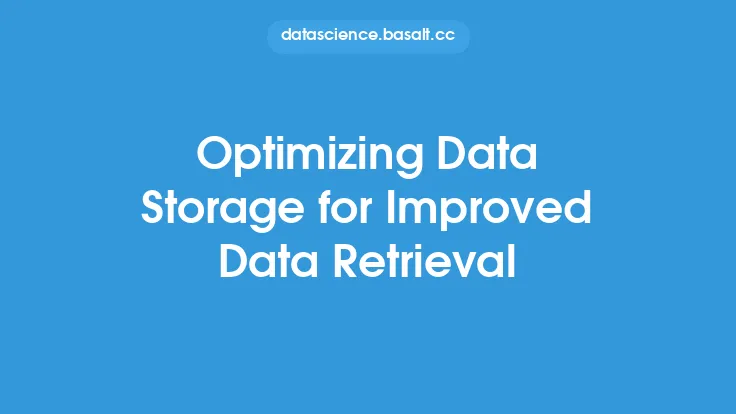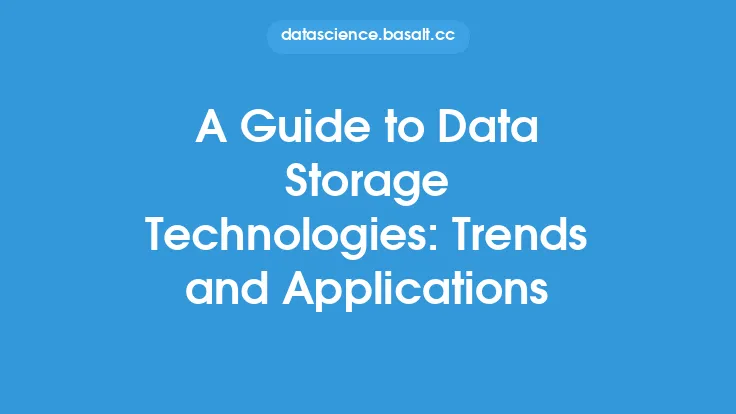Data storage is a critical component of data management, as it enables organizations to store, manage, and retrieve large amounts of data efficiently. With the exponential growth of data, it is essential to have a robust data storage solution in place to support business operations, analytics, and decision-making. In this article, we will delve into the fundamentals of data storage solutions, exploring the different types, characteristics, and considerations for efficient data management.
Types of Data Storage
There are several types of data storage solutions available, each with its own strengths and weaknesses. These include:
- Hard Disk Drives (HDDs): traditional storage devices that use spinning disks and magnetic heads to read and write data
- Solid-State Drives (SSDs): flash-based storage devices that offer faster performance and lower latency
- Flash Storage: a type of SSD that uses flash memory to store data
- Hybrid Storage: a combination of HDDs and SSDs that offers a balance between performance and capacity
- Cloud Storage: a remote storage solution that stores data on the internet, accessible from anywhere
- Tape Storage: a traditional storage medium that uses magnetic tape to store data
Characteristics of Data Storage Solutions
When evaluating data storage solutions, there are several key characteristics to consider. These include:
- Capacity: the amount of data that can be stored
- Performance: the speed at which data can be read and written
- Latency: the time it takes for data to be retrieved
- Reliability: the ability of the storage solution to withstand failures and data loss
- Scalability: the ability of the storage solution to grow with increasing data demands
- Security: the protection of data from unauthorized access and breaches
Considerations for Efficient Data Management
To ensure efficient data management, several factors must be considered when selecting a data storage solution. These include:
- Data growth: the rate at which data is being generated and stored
- Data type: the type of data being stored, such as structured, unstructured, or semi-structured
- Access patterns: how data is accessed and used by applications and users
- Budget: the cost of the storage solution and ongoing maintenance
- Integration: the ability of the storage solution to integrate with existing infrastructure and applications
Best Practices for Data Storage
To get the most out of a data storage solution, several best practices should be followed. These include:
- Regular backups: ensuring that data is backed up regularly to prevent data loss
- Data deduplication: removing duplicate copies of data to reduce storage capacity
- Compression: reducing the size of data to improve storage efficiency
- Encryption: protecting data from unauthorized access
- Monitoring: regularly monitoring storage performance and capacity to ensure optimal operation
Conclusion
In conclusion, data storage is a critical component of data management, and selecting the right storage solution is essential for efficient data management. By understanding the different types of data storage solutions, their characteristics, and considerations for efficient data management, organizations can make informed decisions about their data storage needs. By following best practices and considering the ever-changing landscape of data storage, organizations can ensure that their data is stored, managed, and retrieved efficiently, supporting business operations, analytics, and decision-making.





